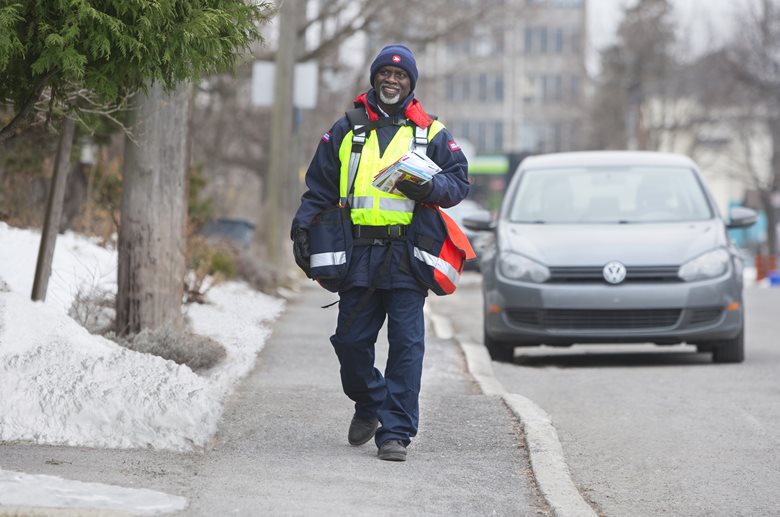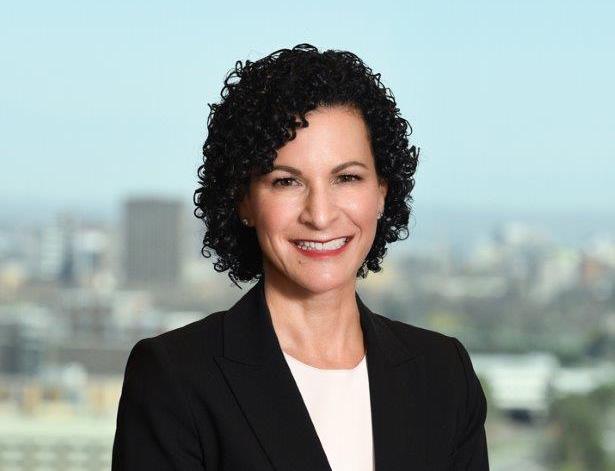Canada Post Chief People and Safety Officer Susan Margles provides her point-of-view on the importance of company culture to successful postal transformation.
Canada Post’s Postal Transformation Project is something that has been in the works for a few years now. How has the project evolved and what are you currently targeting?What I’ve learned in 15 years in the postal industry is that we’re always transforming – there isn’t a discrete start and stop to the different chapters or plans.
We are certainly living our company purpose of “A stronger Canada delivered,” which is the highest expression of where we are moving with our transformation plans. Coming through COVID-19, we have learned a lot about how important we are to Canadians in delivering the things they need every day. That has been a big underpinning in this chapter of our transformation.
The plans we are undertaking now are organized under three pillars. Providing a service that all Canadians can count on is the first pillar. That includes expanding our capacity, making sure we are supporting small and medium enterprises, and enhancing our service, our tracking, and our retail network, which is the bread and butter of the business.
The second pillar focuses on establishing a position of environmental leadership and social purpose – which is tied to our role as a Crown corporation – to ensure that we are serving Canadians in the way in which they expect to be served. This means taking a leadership position on things like the environment and climate, equity, diversity and inclusion, and indigenous reconciliation.
The third pillar is what we call “doing right by our people” and that is the one that my team is most immersed in. Under that pillar, we are making health and safety an even stronger part of our culture going forward. We are making sure we work collaboratively and seek alignment with our different unions to create a fair and respectful workplace. In today’s market with so much going on post-COVID and people questioning how they want to work, who they want to work for etcetera, this pillar is very important in terms of our positioning as an employer.
The Post is a very particular kind of organization - it has a public service mandate, but is expected to be a profitable business. What are the challenges of managing transformation in this kind of environment?
I think it is about finding the right trade-off. In our constituting legislation, we have the dual mandate of providing the service for Canadians, but doing it in a financially self-sufficient manner. That is challenging because, as the market shifts, the letter monopoly is running away from us and the competitive parcels business is becoming our future. It means we need to be more dynamic and think differently.
The way we have articulated our purpose – “A stronger Canada delivered” – speaks to where we have grounded ourselves. Post-COVID, we have made many discoveries about how important we are to Canadians and I think it’s fair to say we’ve gone through different phases of balancing the financially self-sufficient piece with the service piece in different ways, shapes and forms. I think it is probably ever-thus for most postal organizations.
What is particularly germane when you look at transformation in that context is a real effort to engage and work with different groups of stakeholders because you can’t make a decision focused only on the bottom line. We need to think about the federal government, who is our owner and represents all Canadians. We need to think about different stakeholder groups amongst our customers and how they are going to react to, live with and understand the transformation that we are going through. Our unions and our employees are also stakeholders.

How do internal stakeholders need to come together to execute the transformation process?
If you have people working in silos, you are never going to reach the maximum impact of your transformation plan because you will miss things along the way.
We have a number of different processes and fora in which we bring together different parts of the company on a regular basis to make sure that we understand how each of us impacts the other in the initiatives we’re leading. We then share those plans amongst ourselves so we know how other people are counting on us.
From my vantage point, I think it is important that my team and I are injecting the question of culture, along with our human resources pillars, into all other areas of the transformation. Our people are the ones who have to deliver this transformation at the end of the day, so if we do not include them in what we are building then I think we face the risk of falling flat. We are working hard to do that whether through formal or more informal processes.
What has gone into Canada Post’s culture change efforts?
We came to the conclusion early on that we couldn’t achieve business transformation unless we also transformed our culture. That’s not to say we wanted to throw out our culture entirely – we had a lot of very positive aspects to our culture that we wanted to enhance, such as employee pride. We went through a process of discovery to determine those aspects that were not serving us as well as they had in the past.
Not unlike many other posts, we were built up in a time of hierarchy and I think today’s world requires a more agile, more responsive, more flexible approach. One example we have been hearing from our people that we’re still a little too hierarchical in terms of decision-making, that things take a long time, and they’re looking for a way to have more responsibility in their areas and, in turn, more accountability for decision-making.
When leading change, you have to match where you are trying to take the culture with the business transformation you are trying to lead, and then work to ensure that it will enhance what you’re doing. Part of that is articulating to our people what our culture is, what it is not, and where we might want to make some changes. It is about engaging people and getting their perspective.
It is a big effort. There is definitely an importance on tone from the leadership, but it is also about engaging people all across the company all the way down to the front lines. Those are the people Canadians see every day, who really represent the Post.
How are customers part of this process?
I would say that our sales team, who is our face with customers on the business side, is probably one of the groups most excited about the culture change because they love to have something new to talk about with customers. We worked with the sales team in developing our new values and behaviours and putting together the workbooks and different sessions that we are going to be rolling out across the company to equip them to have that conversation. But first we did some listening through the sales team to gather feedback from individual customers – the good, the bad and the ugly – to learn more about their expectations. We want to put Canadians first in our culture discussions.
As an example, when we developed the new expression of our values, which are “trust, respect and deliver,” we looked at them through three different lenses. That is: how do we relate to those as individuals, how do we relate to them as a team, and how to we relate to them vis-à-vis Canadians. Then, when I say I “deliver,” that does not just mean delivering for my team in my role; it is also how I am delivering for Canadians.
I think that by putting customers front and centre in our culture, we’re going to have much more resonance out there. We are going to continue to listen to them and adjust to make sure we are living up to their expectations of us as a Crown corporation.
What are some lessons learned that you might share with other postal operators embarking on their transformation and culture change journey?
Don’t shy away from change and start thinking about it early. We can get very caught up in the business and what we need to do to change the business and then we expect culture to follow, but I don’t think that’s reality. You need to think about what aspects of the culture you need to fire up or tamp down in order to deliver real transformation.
It is also important to include all sorts of stakeholders, all sorts of elements of your employee base, in that culture conversation. Whether that conversation is about the elements of the culture people really want to hang on to, that work for us and make us who we are, or whether it’s the things people feel it is time to let go. It is important you don’t do that from an ivory tower. It is not a one-and-done approach, it is a process of checking back and making sure that things are resonating, that they are landing the way you intended.
Also, be inclusive and have an open mind. People who have been in the organization a long time can get stuck on what they think is the most important part of the culture, but we’re seeing a real shift generationally. Younger people are coming in with different expectations of what a good employer is and what culture they want to develop and thrive in.
This article first appeared in the Spring 2022 edition of Union Postale magazine.
